13.08.2022
Young & Old
The British Boys and Girls Championship knock-out rounds this week are, as usual, fascinating. Carnoustie is in superb condition, the weather has been excellent and the ding and dong and the cut and thrust of matchplay always produces great drama.
What we also see are further illustrations of some same-old truths, unsurprisingly. Teenagers don’t have the benefit of decades of experience in a game that has been played for centuries. The most noticeable manifestation shows itself in tactical awareness and course-management. Strategy and decision-making is a key skill in golf and as some professionals still have some learning to do in this respect, we can expect that some of these talented youngsters do too.
At Jocky’s Burn (the 3rd hole), one of the highest-ranked golfers in the field found the ditch: -
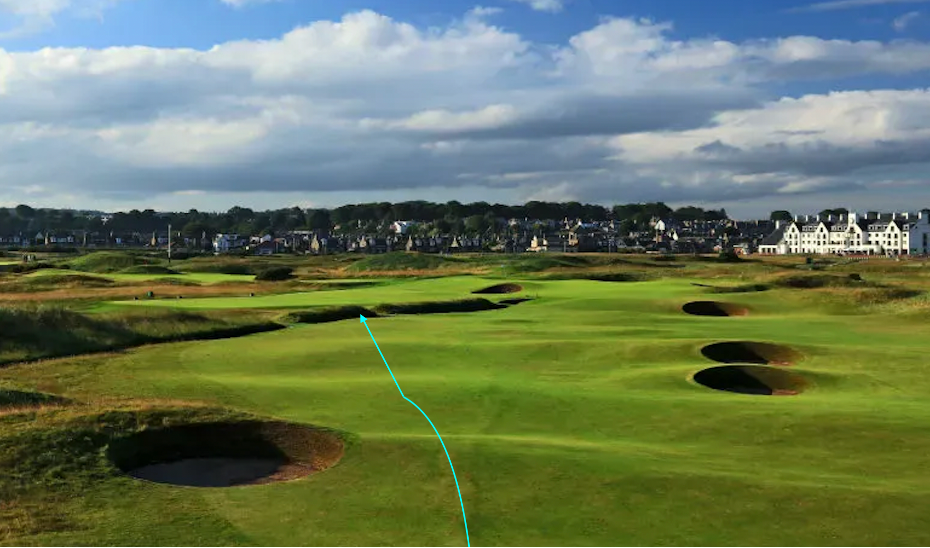
It went in at great pace so it could only have been a wrong club selection off the tee, despite it being an iron. The line would have been good if it had 30 to 50 yards less distance on it, as it would’ve ran 20+ yards further if the ditch wasn’t there, which of course it was and has been… for a very long time!
It was a bad shot-result obviously but what exactly was the plan?
This golfer hadn’t played Carnoustie previously (apart from 9 holes in practise the day before) and at the next, after his opponent had hit it left towards the ditch, he managed to find it! At the 4th, the line off the tee was to go over the first bunker on the right edge of the fairway.
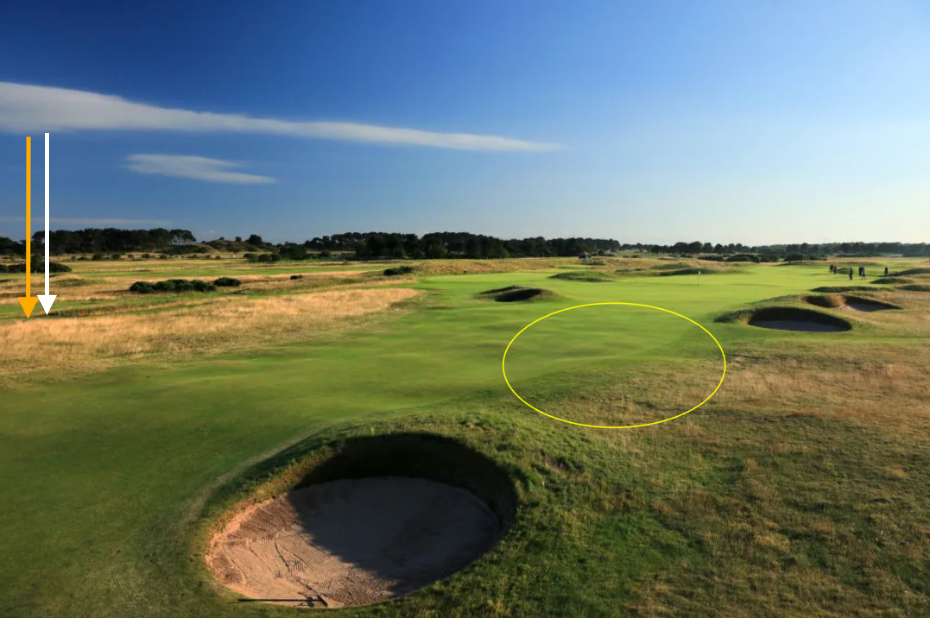
It’s easily carry-able from the tee and there’s an 80 yard gap between it and the next one. The rough is very dry and benign this summer (after not much rain) and also given where the pin was on the left, the yellow circle above was the obvious place to be targeting. Left, where both balls ended up, is the only realistic trouble off this tee. They were 10 feet apart from each other but one in the ditch meant another penalty drop, twice on consecutive holes.
A bad shot-result can be a bad swing or it can be a bad decision (occasionally both). When putting, the miss right could be a block or a push (execution) or it could’ve been hit exactly how we wanted, only that we misread more right-to-left than there actually was or we misjudged the speed of it (decision/plan), every putt being pace and line.
Where this young golfer made a bad decision at the 3rd and had too much club in his hand, it was likely that his errant tee shot at the 4th was just a bad swing and that he may well have been targeting the right half, particularly after his opponent had already hit it left towards the only hazard.
At the 5th, his tee shot again found trouble, 3 in a row, which resulted in another lost hole. Downwind as it was, the ditch less than 100 yards from the front edge of the green can come into play and rules out Driver for most pros and top amateurs. In any wind, the only two bunkers at driving distance are what we plan to avoid.
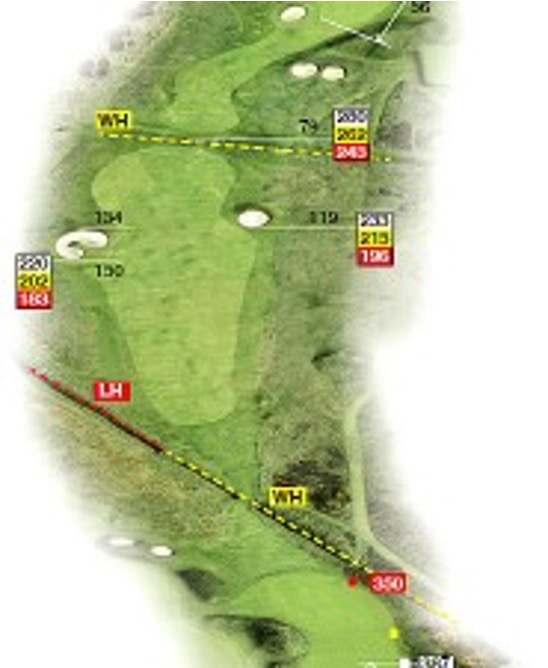
Using an iron and going into the left-hand bunker at the pace it did, this golfer was obviously trying to go between and beyond them. His opponent had hit the ideal tee shot to the middle of the fairway. If he had hit it towards either the left or right bunker and it had travelled the exact same distance as it actually did, it would’ve still been 8-10 yards short of them. From just short of the bunkers in these conditions to the pin on the front level, it was a short approach (or perhaps an 8 iron max) to a very wide target to miss.
Unlike the 3rd (bad plan) and at the 4th (bad execution), it wasn’t as obvious to know if this bad result was a bad decision or a bad swing! It may have been both of course but however it got there and whatever the reason or reasons for it, up against the face meant a splash out sideways and losing the hole to a par 4 once again.
In context, I do NOT believe that the golfer should ever be told what to do in terms of which clubs to use or what lines to go for. Instead, they should be taught how to plan and decide for themselves so that they get more consistent in making the right calls… for them.
Different golfers have different strengths and weaknesses. Some are confident off the tee and will hit it straighter with Driver than their 3 Wood. They have different natures and personalities too. Where some describe themselves as “very aggressive”, we have found through data analysis that others (but much less frequently) can be overly-cautious and too conservative from the tees, in one example using irons off the tees SIX times more often as the average of the rest of his peers who also finished top 20 in one of the biggest tournaments on the planet!
Bad swings and mistakes will always happen in this game of never-perfect. The very best golfers make considerably less mistakes in their planning and decision-making however and can consistently plot their way round championship courses.
There is no one answer to how to manage a golf course, or even one hole. At the 3rd at Carnoustie for example during the British Amateur 2015, we saw Drivers getting knocked on to that green as we do occasionally during the Dunhill Links, having planned to bounce the burn. The conditions, particularly the wind and even the position on the leaderboard can alter game plans. Matchplay dynamics are totally different from strokeplay too but where mistakes in golf will always happen, the very best rarely make mistakes in how they visualise their shots.
When another highly-ranked golfer found the front right bunker at Lucky Slap – the name of the 15th hole at Carnoustie – in a tight match, as he was approaching the green and learning the result of his second shot, I heard him ask “how did it end up there?”
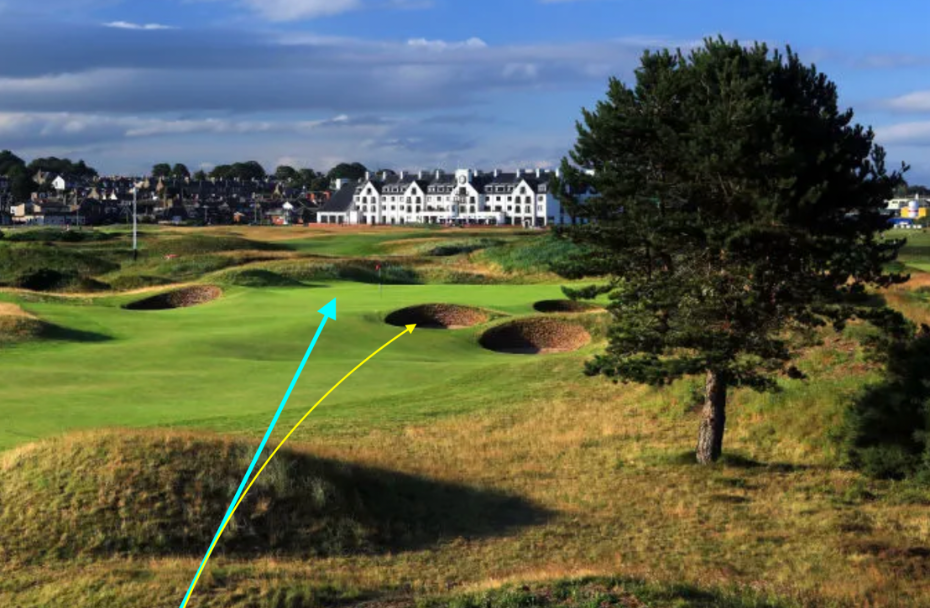
It was a very good question but only he could have answered it in my opinion.
Coming from the right rough as he was, I was wondering on the tee where he was planning to go with his drive! I couldn’t see him being in the fairway at all with the 3 Wood that he chose. Downwind, the only line was the iconic tree (which he hit perfectly) but an iron was the only way to give yourself a chance of playing the approach from the fairway or right semi. His opponent hit iron off the tee and ended up winning the hole at a crucial time.
The pin was just over the front right bunker that he found himself in but in answer to his question, I reckon it could only have been the same possibility, a bad plan or a bad execution. He couldn’t have gone straight at that pin and expected to hold the green. The only objective of that approach (and indeed the primary objective of EVERY approach) is to find the green. In matchplay too, GIR’s are king and creating a birdie putt opportunity of any length has to be the plan. Given the firm conditions and realising that getting close (within 15 feet) was impossible from that angle without bouncing the bunker, his target line could only have been between the front bunkers to the fat of the green. His first bounce was correctly just before the green but being too far right and as close as it was to the bunker, his second bounce was in it and right up against the face, resulting in bogey.
Either he hit his short approach more right than he intended (execution) or he didn’t visualise going for the middle of the gap between the bunkers (plan). Without precision in planning and the decision-making process, we can never answer questions like the one he asked.
Last weekend at the Women’s Open, the caddy, coach and I got the pin sheets the night before and we plotted the optimal target lines for each of the holes. We were factoring in the length of the approaches, the size of the greens, where the trouble was etc. and in 72 holes, we found only ONE “green light flag”, the par 3 13th on the Saturday: -
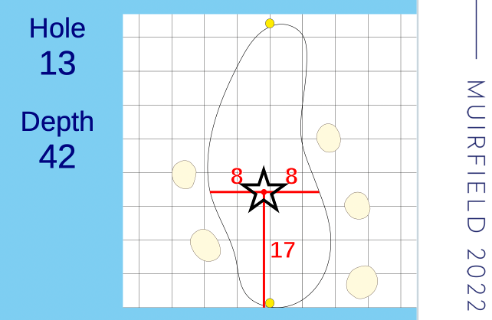 This means that for 71 of the 72 holes, we were planning long or short or left or right of each pin, occasionally with the right distance and much less frequently, on the right line e.g.
This means that for 71 of the 72 holes, we were planning long or short or left or right of each pin, occasionally with the right distance and much less frequently, on the right line e.g.

This young pro made the cut with ease, hit a ton of GIR’s and earned herself a BIG cheque. Whilst the overnight planning was done without her input, these lines and objectives were presented to her well before her warm-up in a strategy meeting (over lunch or breakfast) between her caddy and her only. Too many cooks spoil the meal anyway but something as simple as this helps to sharpen focus and create precision in shot-planning.
Course management does not begin and end on the tees and having a good plan is no guarantee of success. We still have to hit the shots. Not having a clear enough plan over each and every shot can arguably be a guarantee of not tasting success however, having nothing concrete to commit to.
The young can learn from the old truths. In a game where millions of opinions and different “methods” can obscure the facts, it is indisputable that the objectives of each shot type in golf have never changed over the millenia. It’s also true that the simplest things are often the best :)
Graeme Leslie
Golf Data Lab

